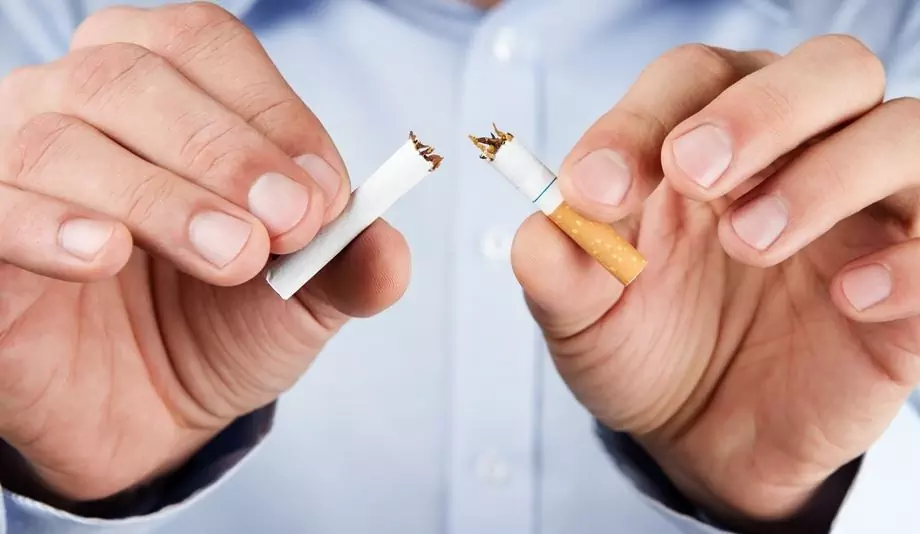- Author Rachel Wainwright [email protected].
- Public 2023-12-15 07:39.
- Last modified 2025-11-02 20:14.
Treatment of angina in children at home: how to treat quickly and effectively
The content of the article:
- Etiology and pathogenesis of angina
- Symptoms of sore throat in children
- Diagnostics
- How to treat angina in children at home
- Prevention
- Video
Treatment of angina in children at home is a frequent and very important question for mothers to a specialist. This is due to the widespread prevalence of pathology and a high risk of developing serious complications.

Treatment of angina at home should be carried out in consultation with the doctor.
Angina, or acute tonsillitis, is an infectious disease, the leading symptom of which is an inflammatory lesion of the tonsils.
Etiology and pathogenesis of angina
To understand the causes and mechanisms of the development of the pathological process in the tonsils, it is necessary to take into account the age-related physiological and anatomical features of the development of the tonsils.
Up to 3 years of age, the tonsils are underdeveloped and little functioning. At 4 years old, their cellular composition is 80% T-lymphocytes, but due to the peculiarities of the ratio of subpopulations and the lack of protective cells, viral, fungal and opportunistic microflora prevail in the pathology of the lympharyngeal ring.

Viruses, particularly influenza viruses, are the most common causes of illness in young children.
From the age of 5, the lacunae and crypts begin to develop actively, and at the age of 7, the morphological reorganization of the palatine tonsils ends, and they take on the maximum surface area.
The most frequent causative agents of angina are viruses (rhinoviruses, influenza and parainfluenza viruses, enteroviruses, herpes virus), bacteria (staphylococci, streptococci, diplococci, pneumococci) and fungi (fungi of the genus Candida). A special role is played by group A beta-hemolytic streptococcus, which often leads to local and general complications.
The infection can get on the mucous membrane of the oropharynx and penetrate into the palatine tonsils by airborne droplets, alimentary or contact.

The causative agent of sore throat can be transmitted by contact
An important role in the pathogenesis of acute tonsillitis is played by a decrease in reactivity and sensitization of the body, a lymphatic-hyperplastic anomaly of the constitution, the nature and virulence of microflora in the lacunae of the tonsils.
Also, the development of the process is influenced by predisposing factors, which include:
- mechanical, thermal or chemical damage to the mucous membrane of the oropharynx and palatine tonsils;
- general and local hypothermia;
- pathological processes in the ENT organs (chronic rhinitis, adenoiditis, sinusitis);
- adverse environmental conditions.
The disease is characterized by the development of an acute inflammatory process in the tonsils and is accompanied by tissue edema, lymph congestion, plethora.
Normally, during the act of swallowing, the products of phagocytosis and desquamated epithelium are removed from the crypts. With inflammation, this is prevented by the branching of crypts, the presence of palatine arches, a triangular fold of varying severity. There is a violation of the drainage of gaps, stagnation of their contents.
Under unfavorable conditions, acute inflammation involves the pharyngeal, lingual, laryngeal tonsils, as well as the lymphoid tissue of the posterior pharyngeal wall.
Symptoms of sore throat in children
Angina in children is characterized by the following symptoms:
- acute onset of the disease;
- a sharp sore throat or increasing discomfort when swallowing;
- an increase in body temperature to febrile numbers (from 38.0 ° C);
- headache;
- general weakness, chills;
- irritability, tearfulness in children of the younger age group;
- enlargement and soreness of regional lymph nodes.
The younger the child, the more pronounced the general reaction of the body and the brighter the clinical manifestations of the disease. Children become capricious, sometimes drowsy, refuse to eat, a nasal tone appears in their voices, and breathing may be difficult. At high body temperature, convulsions, vomiting, and loss of consciousness may occur. Abdominal pain and loose stools are common.
Diagnostics
On examination of the oropharynx and pharyngoscopy, attention is drawn to hyperemia and edema of the palatine arches, palatine tonsils. Infiltration of the posterior pharyngeal wall and uvula is possible. On the surface of the tonsils, a whitish-yellow plaque or purulent discharge is detected, which can accumulate in the lacunae.

To confirm the diagnosis, you must consult a doctor
Submandibular, chin, cervical lymph nodes are enlarged and painful on palpation.
In the clinical analysis of blood, leukocytosis, a shift in the formula to the left (an increase in the number of neutrophils) and an increase in the erythrocyte sedimentation rate (ESR) are determined.
From the surface of the tonsils, the doctor takes material for bacteriological examination.

A rapid test is performed to quickly detect group A beta-hemolytic streptococcus
There is a rapid test to quickly diagnose streptococcal infection. The method is based on the detection of the antigen of group A beta-hemolytic streptococcus and takes from 5 to 10 minutes. The accuracy is up to 98%.
Conducting an express test does not exclude bacteriological examination of discharge from the tonsils and oropharynx, even with a positive analysis. Bacteriological culture allows you to determine the type of pathogen and its sensitivity to a number of antibiotics. Thus, this analysis is necessary not only to confirm the diagnosis, but also to correct antibiotic therapy if necessary.
How to treat angina in children at home
Treatment of angina in children includes general and local therapy.
If a bacterial infection is suspected and confirmed, antibiotic therapy is prescribed, which is not carried out with a viral or fungal infection of the tonsils.
A wide variety of types of pathogens and the tendency of frequent detection of resistant flora dictate the need for the selection of an antibacterial drug, taking into account the microflora of the pharynx and its sensitivity to antibiotics. Antibiotic therapy is prescribed strictly by a specialist: pediatrician, infectious disease specialist, therapist or otorhinolaryngologist.
With the wrong choice of antibiotics and the timing of treatment, the pathogen remains in the focus of inflammation, resistance appears, and subsequently the pathological process becomes chronic.

The choice of the drug, determination of the frequency and duration of its use is carried out by the doctor
The groups of choice for gram-positive coccal flora are:
- semi-synthetic broad-spectrum penicillins: Ampicillin, Amoxicillin, Amoxiclav, Augmentin, Nafcillin;
- 1st generation cephalosporins: Cephalexin, Cephalothin, Cefazolin;
- macrolides: Erythromycin, Rovamycin;
- Fusidin.
For the treatment of anaerobic pathogens, drugs of the penicillin group are prescribed: Ticarcillin, Piperacillin, Azlocillin. Also cephalosporins II and III generation (Cefaclor, Cefoxitin, Cefamandol) and macrolides (Azithromycin) are suitable for sensitivity.
But even with the correct selection of antibiotics, it is necessary to remember about the growing resistance of pathogens and, if necessary, to correct the treatment based on the results of bacteriological research.
There are also microorganisms (co-pathogens) that normally inhabit the upper respiratory tract and produce beta-lactamases. This enzyme destroys antibiotics of the penicillin series (penicillin, phenoxymethylpenicillin, ampicillin, amoxicillin) and many cephalosporins.
The presence of co-pathogens is one of the reasons for the ineffectiveness of penicillins and cephalosporins in the treatment of angina, which is a prerequisite for the appointment of antibiotics protected by a beta-lactam inhibitor, clavulanic acid: Amoxicillin clavulanate (Amoxiclav, Panklav).
Antibiotics are well distributed in body fluids and tissues, penetrate into the palatine tonsils, the secret of the paranasal sinuses, saliva and bronchial secretions.
The dosage of the drug is selected individually, depending on the severity of the condition, the patient's age and body weight. The maximum daily dose of amoxicillin for children is 45 mg / kg of body weight, clavulanic acid - 10 mg / kg of body weight. Treatment is prescribed in a course of 5 to 14 days.
Antibiotic therapy for chronic angina is carried out only during an exacerbation, since antibiotics themselves enhance immunosuppression and disrupt the flora in the oral cavity and gastrointestinal tract and can form a vicious circle when taken when there is no indication. This once again confirms the need for prior competent consultation with a specialist.

Antibiotic therapy should be carried out in combination with the prevention of dysbiosis - the intake of lacto- and bifidobacteria
Treatment with antibacterial agents should be accompanied by the prevention of dysbiosis. For this purpose, drugs are prescribed containing a large number of lacto- and bifidobacteria: Bifidumbacterin, Probifor, Bifiform, Linex, Acipol, Enterol. It is preferable to use combined probiotics, as well as combine them with prebiotics, which stimulate the reproduction of beneficial microorganisms.
The drugs are presented in various dosage forms: capsules, powders, solutions. This is especially important when treating young children, for whom liquid form of drugs is often used.
Children aged 2 years and younger are often prescribed Bifiform Baby, which is a probiotic that promotes the formation and restoration of intestinal microflora. There is also a complex preparation Bifiform Kid, which contains bifidobacteria, lactobacilli and B vitamins. It is intended for children from 3 years old and is available in the form of chewable tablets.
Popular drugs are Linex and Acipol, which contain a large amount of beneficial bacteria, and also contribute to good results in the treatment or prevention of intestinal dysbiosis. To obtain the desired effect, it is very important to take the drug in courses.
In an acute process with a hyperergic reaction of the body, non-steroidal anti-inflammatory drugs are prescribed: Ibuprofen, Paracetamol.
Immunostimulating therapy is carried out according to indications, mainly for chronic angina during an exacerbation. The most widespread are the following groups of drugs:
- peptides with immunoregulatory, detoxifying, antioxidant effects: Imunofan, Polyoxidonium, Likopid;
- antigenic lipopolysaccharides of microbial origin: Pyrogenal, Ribomunyl;
- phytopreparations: Tonsinal, Tonsilgon;
- natural immunostimulating agents: ginseng, leuzea, echinacea, garlic, propolis, chamomile;
- homeopathic and antihomotoxic agents: Angin-Hel, Euphorbium, Tonsilotren, Umkalor, Ubiquinone.
Immunocorrective therapy in children with dysbiosis should also be carried out using probiotics (Biovestin, Normoflorin B and L).
To improve metabolism, restore the work of enzyme systems and increase immunity, vitamin complexes are prescribed containing vitamins of groups A, E, C, as well as trace elements (zinc, magnesium, iron, calcium).
The effectiveness of the prescribed therapy can be assessed as early as 2-3 days from the start of treatment. The lack of positive dynamics 72 hours after the start of the antibiotic intake is a reason to consult a doctor. The need for correction of therapy can only be assessed by a specialist.
Local treatment plays an important role. Antiseptic solutions (Chlorhexidine, Miramistin) are used to rinse the throat and rinse the lacunae of the tonsils. Antiseptic and antibacterial agents are prescribed in the form of sucking tablets (Septolete, Grammidin, Neo-Angin, Lizobakt).
Lizobact lozenges contain lysozyme, which is a natural antimicrobial, antiviral and antifungal substance involved in the regulation of local immunity. It can be used from 3 years old.
Many drugs contain essential oils, local anesthetics and deodorant agents that relieve pain and discomfort in the throat, such as Grammidin Neo with anesthetic or TeraFlu LAR. The latter is available in the form of lozenges and a spray for topical use.
TeraFlu LAR has a bactericidal effect against aerobic and anaerobic gram-positive and gram-negative bacteria. Also, the drug has antiviral activity against influenza, parainfluenza, herpes viruses and fungicidal activity against yeasts.
In the treatment of angina in children at home, they quickly have the effect of inhalation with medicinal substances sprayed with a special apparatus - a nebulizer. The device is mainly used for children from 3 years old.
Preparations for a nebulizer are diluted with saline in a ratio of 1: 1. For example, saline with mineral water moisturizes and softens the mucous membrane of the pharynx, and also relieves swelling. Furacilin is widely used, which has an antibacterial effect.
With severe swelling in the throat and larynx, inhalations with Kromohexal are prescribed. An antiseptic effect is provided by a solution of Miramistin and Tonsilgon N. The choice of the drug, the number of procedures and their frequency are determined by the doctor individually.
The criterion for effective treatment is a decrease in the general and local inflammatory response of the body: a decrease or normalization of body temperature, a decrease in hyperemia and infiltration of the palatine arches and palatine tonsils, a decrease in regional lymph nodes.
In most cases, the treatment of angina in children is carried out at home, but in case of a severe course of the disease, hospitalization is required.

Fresh beet juice is often used to treat sore throat at home.
In addition to the treatment prescribed by the doctor, folk remedies are used to quickly resolve the inflammatory process. Beet juice is often used to reduce swelling and pain. It is recommended to rinse the throat with herbal infusion (sage, calendula, chamomile, eucalyptus).
Dr. Komarovsky pays special attention to parents that when treating a child with angina at home with folk remedies, it is important not to forget to drink the pills prescribed by a specialist.
Prevention
Preventive measures to avoid sore throats or complications:
- teaching the child to observe the rules of personal hygiene;
- balanced diet;
- general strengthening of immunity;
- sanitation of the oral cavity and chronic foci of inflammation in the body;
- elimination of the causes or factors that impede nasal breathing.

A child from an early age must be taught to observe the rules of personal hygiene.
To prevent purulent (paratonsillar abscess, mediastinitis, otitis media) and somatic (rheumatism, glomerulonephritis, arthritis) complications of angina, it is important to consult a doctor in a timely manner and choose adequate treatment.
Video
We offer for viewing a video on the topic of the article.

Alina Ervasova Obstetrician-gynecologist, consultant About the author
Education: First Moscow State Medical University. THEM. Sechenov.
Work experience: 4 years of work in private practice.
Found a mistake in the text? Select it and press Ctrl + Enter.






